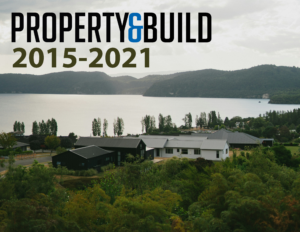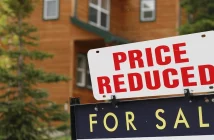Median house prices across New Zealand increased by 8.6% in November to a new record high of $630,000, up from $580,000 in November 2018, according to the latest data from the Real Estate Institute of New Zealand (REINZ)

Median house prices for New Zealand excluding Auckland increased by 10.3% to a new record high of $535,000, up from $485,000 in November last year.
Median house prices in Auckland increased by 2.9% to $885,000 – up from $860,000 at the same time last year – the highest price in 32 months. These results are in line with the REINZ House Price Index (HPI) which saw property values in Auckland increase 2.7% annually to a new record high of 2,923.
10 regions saw record median prices. Record median prices were recorded in:
- Waikato with an 11.3% increase to $590,000 up from $530,000 at the same time last year
- Bay of Plenty with a 7.8% increase to $636,000 up from $590,000 at the same time last year
- Hawke’s Bay with a 14.0% increase to $535,800 up from $470,000 at the same time last year
- Taranaki with an 8.5% increase to $407,000 up from $375,000 at the same time last year
- Wellington with a 12.1% increase to $695,000 up from $620,000 at the same time last year
- Nelson with a 16.6% increase to $610,000 up from $523,000 at the same time last year
- Marlborough with an 8.4% increase to $488,000 up from $450,000 at the same time last year
- Canterbury with a 5.2% increase to $468,000 up from $445,000 at the same time last year
- Otago with a 14.4% increase to $540,000 up from $472,000 at the same time last year
- Southland with a 16.4% increase to $320,000 up from $275,000 at the same time last year.
Additionally, a record equal median high was recorded in Manawatu/Wanganui of $400,000, the same price as in October 2019.
Two regions experienced an annual decrease in median price – Northland, with a fall of -1.2% from $505,000 in November 2018 to $499,000 in November this year and Tasman, with a fall of -3.7% from $625,000 in November 2018 to $602,000 in November this year.
Bindi Norwell, Chief Executive at REINZ says: “November was a very strong month price wise, with record median prices seen in 10 regions and a record equal in Manawatu/Wanganui. This is the highest number of regional records we’ve seen in a single month since March 2005. Additionally, the country saw a new national record median price of $630,000 and 24 territorial authorities around the country saw record median prices including Whangarei District, Auckland City, Tauranga City, Napier City, Kapiti Coast District, Lower & Upper Hutt Cities, Nelson City, Christchurch City, Dunedin City and Invercargill City.
“The Auckland market has seen prices increase for three months in a row, suggesting that we’re now entering a new normal for the country’s biggest real estate market where the increasing levels of confidence in the property market coupled with low interest rates and a lack of choice of new listings means that people are prepared to pay more for properties than they were a few months ago. The median price for Auckland represents a $22,000 increase since last month and is the highest price in 32 months,” continues Norwell.
“However, median prices were mixed across the wider Auckland Region with the likes of Auckland City seeing an 8.4% increase on November 2018 to a record of $1,030,000, Franklin District remaining flat on $702,000 but North Shore City seeing a -6.2% annual decrease to $985,000,” she continues.
Lack of listings and vendor expectations slowing down sales volumes in the regions
The number of residential properties sold across New Zealand in November decreased by -1.9% from the same time last year to 7,405 down from 7,550 (145 fewer properties), although it was the highest number sold since May this year.
For New Zealand excluding Auckland, the number of properties sold decreased by -6.1% when compared to the same time last year (to 5,070 down from 5,402) – again, the highest they’ve been since May this year.
In Auckland, the number of properties sold in November increased by 8.7% year-on-year (to 2,335 up from 2,148) – the highest number of residential properties sold for 18 months and the highest number of properties sold in the month of November since November 2015.
Regions outside Auckland with an increase in annual sales volumes during November were:
- Waikato: +5.6% (from 773 to 816 – 43 more houses) – the highest for the month of November in 4 years
- West Coast: +7.5% (from 40 to 43 – 3 more houses) – the highest for the month of November in 8 years.
Regions with the greatest decrease in annual sales volumes during October were:
- Taranaki: -24.8% (from 226 to 170 – 56 fewer houses) – the lowest for the month of November in 5 years
- Gisborne: -18.8% (from 85 to 69 – 16 fewer houses)
- Wellington: -12.8% (from 890 to 776 – 114 fewer houses) – the lowest for the month of November in 3 years.
“The number of properties sold across the country during November decreased by -1.9% when compared to the same time last year, although it was the highest number of residential properties sold since May this year. We’re beginning to hear anecdotal evidence from agents around the country that with the ongoing lack of listings which has led to rising median prices, that we’re now starting to see the gap widening between vendor expectations and what purchasers are willing to pay for a property in some parts of the country.
“With more than 9,000 fewer listings than 2018 and more than 13,000 fewer listings than in 2017, we can expect to see this pattern of lower sales volumes continue for the immediate future, unless we start to see more properties for sale across most parts of the country,” continues Norwell.
“During November only three regions saw an annual increase in the number of properties sold: Auckland (+8.7%) – the highest number of residential properties sold for 18 months, Waikato (+5.6%) and the West Coast (+7.5%). Otago’s sales count decline of -10.9% annually meant it had the lowest sales count for the month of November since November 2013,” continues Norwell.
REINZ House Price Index (HPI) reaches new record high for NZ and 9 regions
The REINZ House Price Index for New Zealand, which measures the changing value of property in the market, increased 5.6% year-on-year to 2,902 – a new record high.
The HPI for New Zealand excluding Auckland increased 8.3% from November 2018 to 2,884 another new record high.
The Auckland HPI increased 2.7% year-on-year to 2,923 a new record high and the first positive annual increase in 14 months.
In November, Southland again had the highest annual growth rate with a 20.8% increase to 3,227 just -0.4% off the record high of 3,240. In second place was Manawatu/Wanganui with an annual growth of 19.7% to a new record high of 3,412 and again in third place was Gisborne/Hawke’s Bay with a 14.4% annual increase to a new record high of 3,011 – the first time Gisborne/Hawke’s Bay has gone over the 3,000 mark.
In November, 9 out of 12 regions reached record high HPI levels; the only exceptions were Bay of Plenty (+6.1%), Otago (+9.6%) and Southland (+20.8%) showing the overall strength of the property market.
Days to Sell decreases both YOY and MOM
In November the median number of days to sell a property nationally decreased by 2 days from 35 to 33 when compared to November last year. This figure was 1 day fewer than last month’s figure of 34 days.
For New Zealand excluding Auckland, the median days to sell decreased by 2 days from 34 to 32. Auckland saw the median number of days to sell a property fall from 37 to 35 year-on-year.
Southland again had the lowest days to sell of all the regions at 18 days, down 5 days from the same time last year, and 3 days lower than last month’s figure and is the lowest median days to sell since August 2007. November saw 6 regions with the median number of days to sell below the 30 mark.
The West Coast had the highest days to sell at 72 days, down 4 days on November last year, but up 34 days on last months’ figure of 38. Northland had the second highest median days to sell across the country at 46 days – up 3 days on the same time last year, but down 13 days on last month’s figure of 59.
Auctions
Auctions were used in 17.1% of all sales across the country in November, with 1,263 properties selling under the hammer (the highest percentage in 24 months) – up from the same time last year, when 14.9% of properties (1,126) were sold via auction, and up on October 2019 when 15.1% (1,062) of all sales were via auction.
Gisborne again had the highest percentage of sales by auction across the country with 55.1% (or 38 properties) in the region sold under the hammer – up from 50.6% (43 properties) in November 2018. This is the highest percentage of properties sold by auction in 7 months.
Auckland saw the second largest percentage of sales by auction on 32.3% (754 properties) up from 25.0% in November 2018 (536 properties) and the highest percentage of auctions in 24 months. The Bay of Plenty had the third highest percentage of auctions in the country with 21.1% (105 properties) sold under the hammer, up from 20.6% (111 properties) in November 2018 – this is the highest percentage of properties sold by auction in 2 years.
Inventory
The total number of properties available for sale nationally decreased by -19.4% in November 2019 to 22,049 down from 27,361 to – a decrease of 5,312 properties compared to 12 months ago.
All 15 regions saw an annual decrease in total inventory levels, with the largest percentage decreases in:
- Taranaki: -36.2% from 594 to 379 – 215 fewer properties and the lowest level of inventory since records began
- West Coast: -29.9% from 468 to 328 – 140 fewer properties
- Southland: -28.9% from 512 to 364 – 148 fewer properties
- Marlborough: -27.5% from 367 to 266 – 101 fewer properties.
Gisborne, Hawke’s Bay and Wellington have the lowest number of weeks’ inventory with 7 weeks inventory available to prospective purchasers. This was followed closely by Manawatu/Wanganui, Otago and Southland all with 9 weeks’ inventory available to prospective purchasers.
The West Coast had the highest number of week’s inventory with 43 weeks’ inventory available to prospective purchasers – the highest in 7 months.
Price Bands
The number of homes sold for less than $500,000 across New Zealand fell from 39.2% of the market (2,962 properties) in November 2018 to 31.5% of the market (2,329 properties) in November 2019.
The number of properties sold in the $500,000 to $750,000 bracket increased from 30.5% in November 2018 (2,303 properties) to 32.8% in November 2019 (2,426 properties).
At the top end of the market, the percentage of properties sold for $1 million or more increased from 14.7% (1,113 houses) in November 2018 to 16.8% (1,241 houses) in November 2019 the highest percentage of $1 million plus sales ever.



